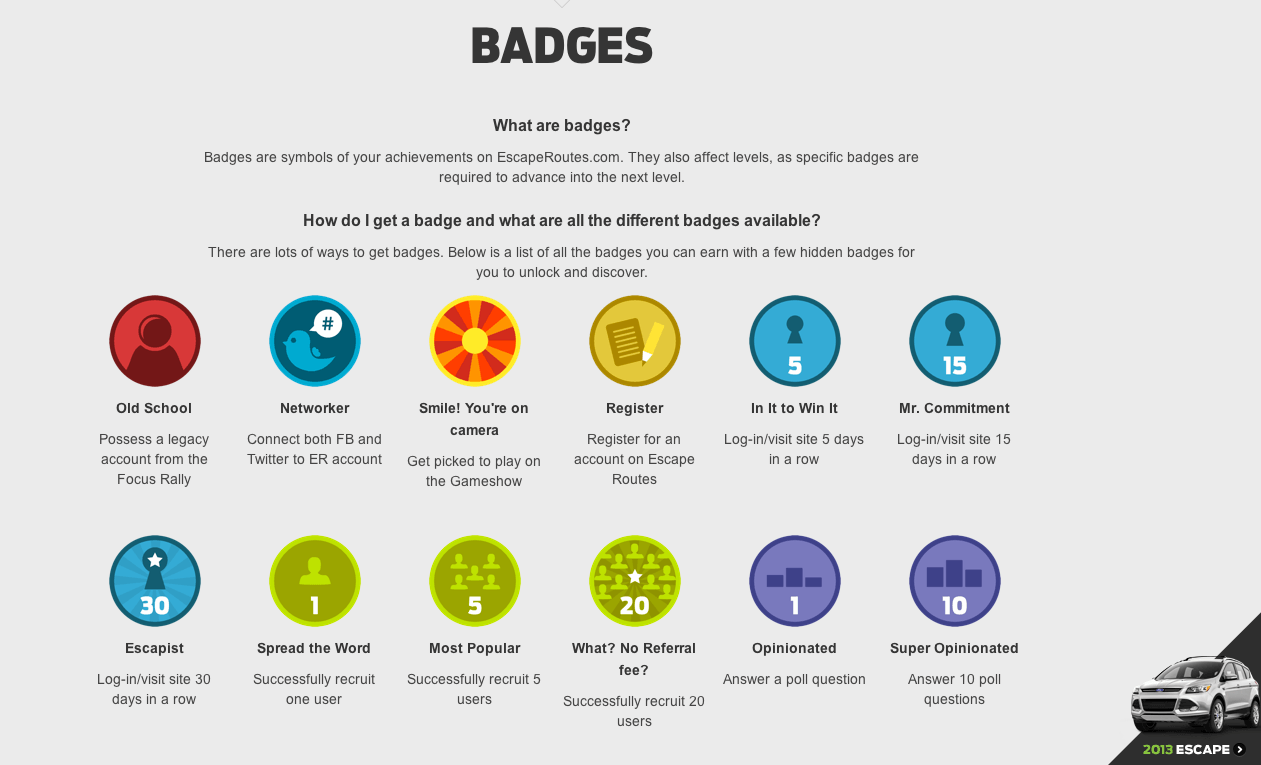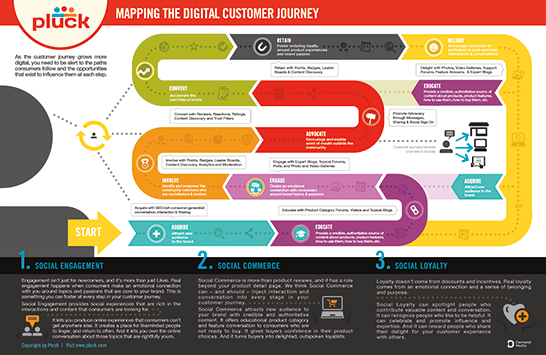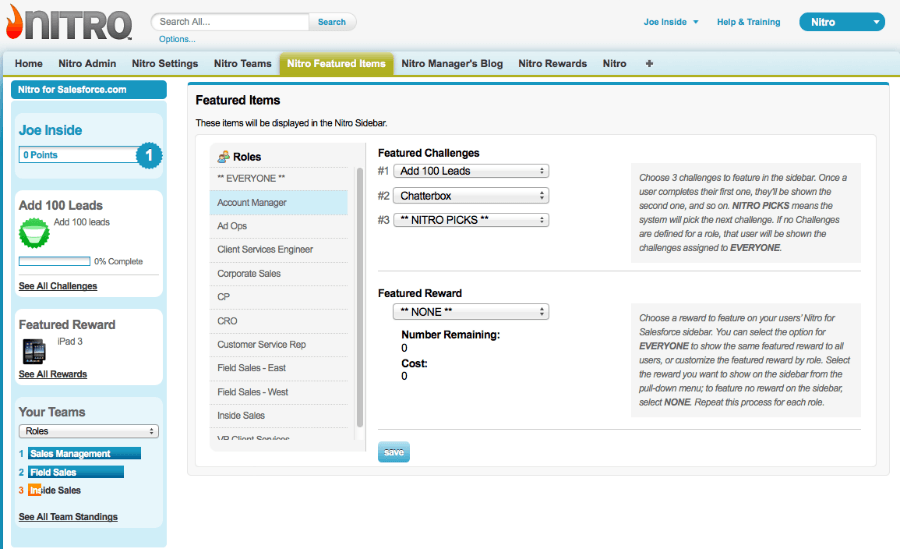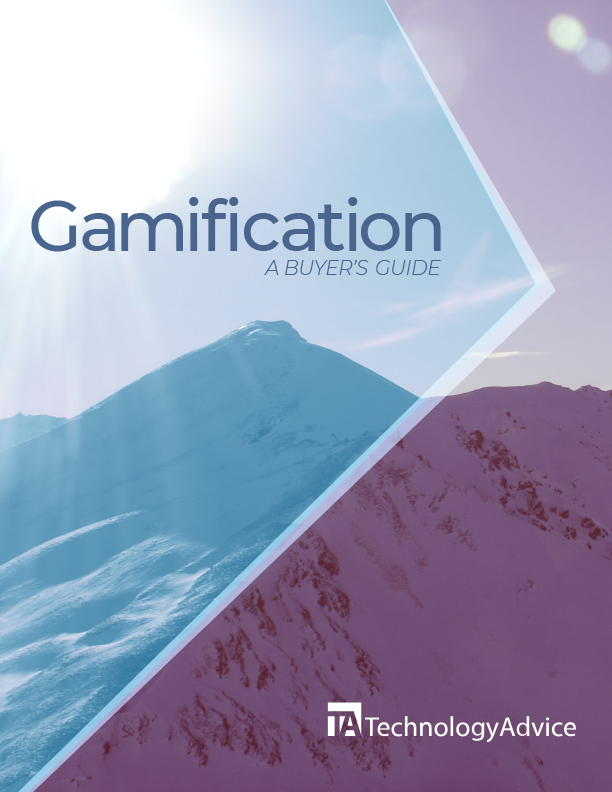It seems every week new stories about innovative uses of gamification make the rounds of digital media.
Gyms and fitness organizations gamify their exercise programs. Retail stores are gamifying shopping. Businesses are moving towards interactive employee training, and websites are focusing more and more on user experience.
M2 Research says the gamification market will surpass almost $3 Billion by 2016, which is a pretty clear indicator that it’s becoming an integral part of how consumers, employees, and companies interact with one another. Other studies have pointed out the positive impacts of gamification on customer loyalty, employee engagement, and the learning process.
Even so, it can be hard to discern exactly where and how gamification fits in with your enterprise company. Is it for customers, or should it be employee-facing? Where could you reap the biggest ROI — Sales? Service? Elearning? Ecommerce?
What if the answer is all of the above?
If your company’s budget is healthy, the best option is sometimes to go big or go home, meaning you may want to consider a comprehensive platform — something that lets you apply game mechanics to more than one niche.
With that in mind, here are four enterprise-level gamification platforms that offer heavy customization and flexibility, thereby placing the power to innovate squarely in your hands.
Badgeville

Badgeville is one of the biggest, most successful platforms on the market, with past and current clients such as AT&T, Universal Music Group, and Expedia. They offer a single-interface, cloud-based service that gives administrators full control and analysis of users in their digital ecosystem.
The Badgeville rewards system is more advanced than traditional point/leaderboard systems in that it offers personalized rewards to each user based on city of origin, interests, job title, and even by the type of user interaction in which they occur. The platform also uses missions, social rewards, levels, and varying point systems to engage users in real time.
Badgeville works with a variety of customer relationship management (CRM) systems, as well as enterprise resource planning (ERP), learning management systems (LMS), and other technologies. This platform allows users with solutions for both sides of the market (business-facing and consumer-facing), including eCommerce, social media, mobile applications, elearning, and employee adoption and performance.
With an approach this thorough, it’s no wonder Badgerville was named “Best Platform as a Service in 2013” (when it was three years old) by the Software & Information Industry Association.
Pluck

Although limited to the consumer-facing market, Pluck is a powerful, enterprise level platform designed to help your company create an integrated social community that rewards loyal customers. Pluck takes a widget approach, offering a host of pre-designed tools with out-of-the box functions that can be used as-is, or customized to meet specific needs.
Pluck works with most applications, whether web or mobile, and connects to twelve different social media sites, along with leading ecommerce platforms. Gamification rewards come in the form of points, badges, leaderboards, and second-party awards, with the ability to choose exactly what kinds of customers and behaviors you want to encourage.
The platform will require some IT knowledge to fully use, but the payoff is adaptability. Pluck incorporates a software development kit for ambitious users who want to develop their own unique features from within, along with a set of oversight tools that give enterprises the ability to monitor and analyze community data every step of the way. Pluck has contracted its platform in the past with established companies like Whole Foods, Redbox, Estée Lauder, and Bose.
Bunchball

Another cloud-based, enterprise platform in the vein of Badgeville, Bunchball is incredibly adaptable and can be used to boost collaboration, sales, user-engagement, or key performance indicators (KPIs) chosen by management. An advantage that Badgeville may have over Bunchball is its Visualizer module, which is essentially a library of gamification graphics such as player elements, progress representations, tutorial interfaces, and notifications. The benefit of Visualizer is that it gives administrators the ability to select custom visual components without needing to re-write code (although Visualizer lets you do that, too).
Bunchball rewards include badges, level-ups, and points that can be redeemed for monetary or intrinsic value. They offer a stand-alone system (Nitro) and platforms that integrate with Salesforce, Remedyforce, IBM Connections, Jive, NICE, and SAP Jam.
An impressive catalog of A-list customers includes Ford, T-Mobile, Wendy’s, and Victoria Secret. Among other awards, Bunchball won “Best Enterprise Use of Gamification” at the 2012 GAwards.
Funifier

Last, but not least, comes this multi-lingual, business-facing platform. Funifier emphasizes ease-of-customization, and they’ve designed their platform accordingly by including an administrative “studio” that IT managers can use to sculpt their own gamification strategies, as well as pre-built game widgets that can be selected for a variety of uses. These widgets could be helpful for the IT professional who has never designed a gamification strategy before. No matter what vendors tell you, there will be a learning curve.
One unique quality of Funifier is its choice to integrate external programs into gameplay, such as Microsoft Office (documents as part of a challenge), Arduino (presence sensors, pressure, sound, connected to the interface), and major social networks. Funifier comes at a lower price point than its larger competitors, which means it lacks some of the luster and omnipotence of a system like Badgeville, but that doesn’t eliminate it as a contender for businesses looking to enhance engagement and productivity. As always, your needs should determine your purchase.
***
It’s easy sometimes to be skeptical about gamification. Can dubbing “fun” and “rewards” over [insert your application here] really make it more engaging and successful? Well, of course not. The success of any business endeavor – whether it’s getting your sales team to adopt a new CRM, or convincing users to stay on your website longer – will only succeed with the support of holistic best practices.
Gamification, however, is one of those best practices. Gamification sets out to improve engagement, in whatever context it appears, and that means putting people over process. Can gamification make people more interested in and attracted to something? Can it make them invest themselves, instead of simply exert themselves? Yes. Yes, it can.
Top Gamification Software Recommendations


